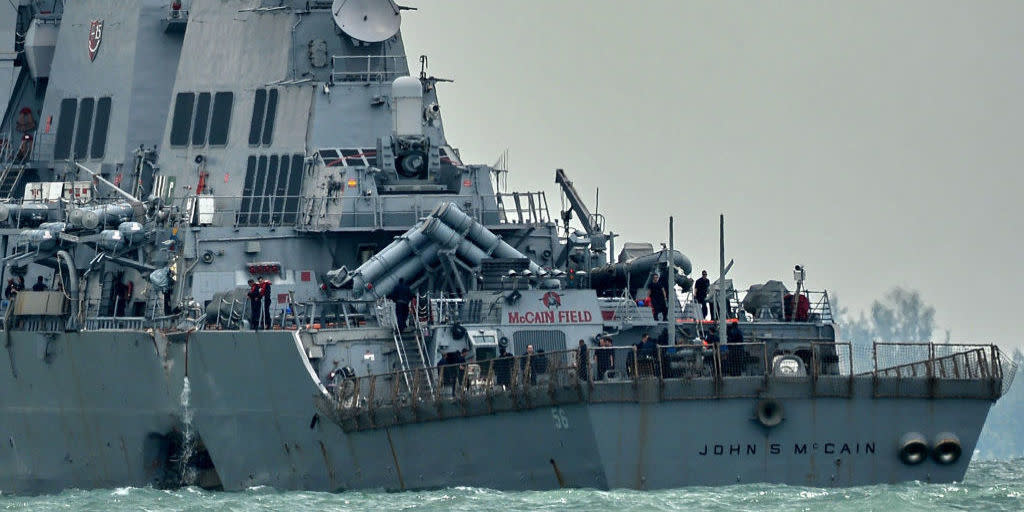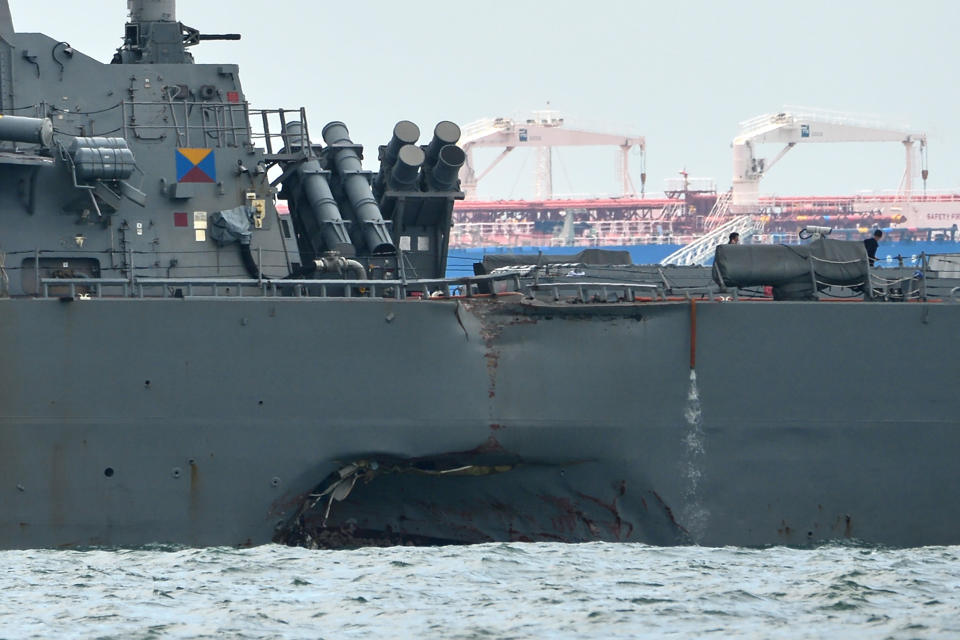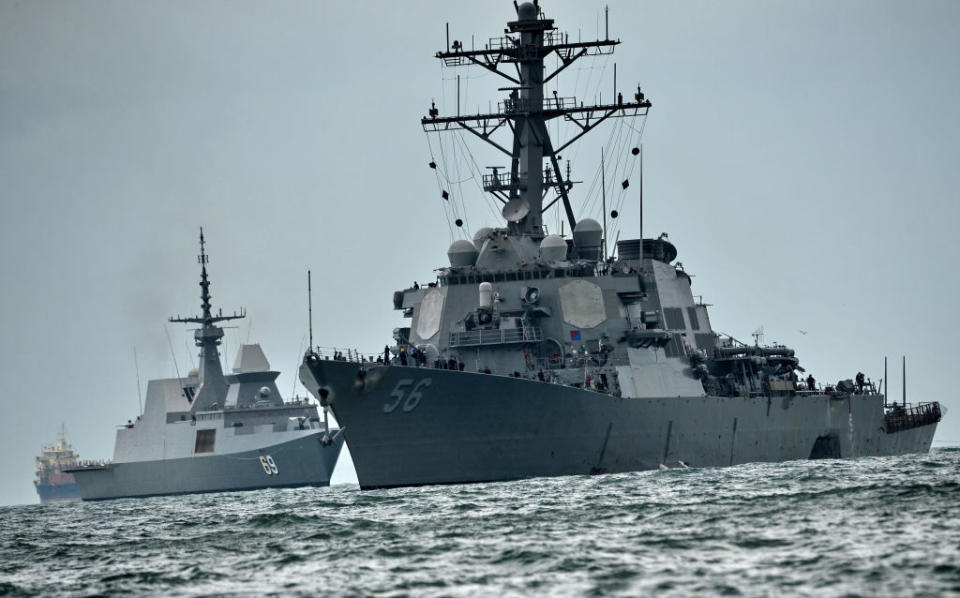No, the USS McCain Wasn't a Victim of GPS Spoofing

The destroyer USS John McCain has arrived at Changi Naval Base in Singapore after a collision with a civilian oil tanker. Pictures show a large, gaping gash in the warship's port side, which caused extensive flooding. Ten sailors remain missing and five were medically evacuated in the second collision in two months involving a U.S. Navy destroyer and a civilian tanker,.
And where there's a pattern-there's a conspiracy.
The McCain collided with the Liberia-registered Alnic MC, a 600 foot long, 30,000 gross ton tanker, in the early morning hours of August 21st, resulting in a large gash on the destroyer's port (left) side. The hole flooded the ship's interior, including crew berthing, machinery, and communications rooms. Damage control teams on the ship reportedly prevented further flooding. Navy divers are on scene at Changi and further assessing damage.

The Strait of Malacca waterway is one of the busiest waterways in the world, with 80,980 transits by ships of all kinds, military and civilian, in 2015. The strait enables ships plying the route between Europe and Asia to shave three days and 1,000 miles off their trip, and traffic has exploded with the growth of China's economy.
The USS John McCain is an Arleigh Burke-class guided missile destroyer. Based at Yokosuka, Japan, it is part of the U.S. Navy's 7th Fleet and one of several destroyers modified to shoot down ballistic missiles. The destroyer was returning from a freedom of navigation exercise in the South China Sea, during which it sailed within six nautical miles of Mischief Reef, an artificial island created and claimed by China.

Already, conspiracies are beginning to make the rounds that the USS McCain-and the USS Fitzgerald earlier this summer-were the victims of GPS sabotage. The theory goes that some unfriendly power interfered with the U.S.-owned, satellite-based Global Positioning System. Military and commercial ships worldwide utilize GPS to determine their locations in relation to other ships. So-called "GPS spoofing" causes GPS trackers to misidentify a ship's location, presumably confusing ships and causing accidents.
GPS sabotage does exist. America's potential adversaries, realizing the U.S. military's dependence on the system for everything from daily navigation to weapons targeting, have been working to devise ways to jam or spoof GPS signals.
North Korea periodically jams GPS signals in South Korea, interfering with ship and aircraft navigation, while drivers in Moscow have reported GPS problems in the central part of the Russian capital. Even more ominously, in a case of actual "spoofing," last month sailors in the Black Sea reported that their GPS-based systems were misreporting the location of their ships 25 nautical miles from their actual location. The spoofing was reported off the coast of Novorossiysk, Russia.
Could the McCain's collision be the result of GPS spoofing? It's very unlikely. Assuming a hostile power wanted to spoof the American destroyer, the signal it would have to broadcast to cause an accident would be wide enough to affect dozens, if not hundreds of ships in the region and someone would have noticed it. (After all, it was ordinary civilian mariners on the Black Sea that reported the spoofing campaign off Novorossiysk.)
There are enough nearby islands that a meaningful deviation from what ships crews were seeing with their own eyes would have been glaringly obvious. Furthermore, the conspiracy ignores the fact that GPS is not the only means U.S. Navy ships use for navigation. Watchstanders on the McCain should have been posted to keep an eye out for unexpected obstacles, ships not broadcasting an AIS transponder signal, and other potential hazards.
In response to the collision Admiral Scott Swift, commander of the U.S. 7th Fleet ordered a "fleetwide review of seamanship and training" for the Pacific-oriented fleet. Chief of Naval Operations Admiral John Richardson described himself as "devastated and heartbroken" at the news and ordered a one day "operational pause" for Navy forces worldwide to review safety procedures.
You Might Also Like

